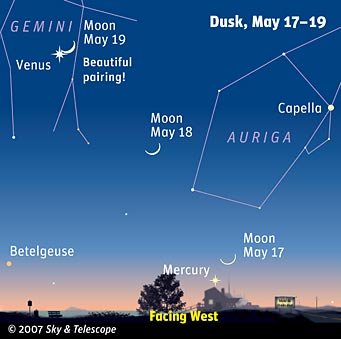

While at opposition, Pluto will be located 3.12 billion miles, 5.02 billion km, or 279 light-minutes from Earth. On that date, the Earth will be positioned between Pluto and the sun, minimizing our distance from that outer world and maximizing Pluto's visibility. On Wednesday, July 20, the dim and distant dwarf planet designated (134340) Pluto will reach opposition for 2022. (Image credit: Starry Night) (opens in new tab) Friday, July 15: Gibbous moon and Saturn (overnight)
#Skyand telescope.com skychart full
Supermoons shine about 16% brighter and appear 6% larger than an average full moon (red circle). This full moon will occur only 10 hours after lunar perigee, producing higher tides worldwide and the largest supermoon of 2022. All of the variations in brightness you see arise from differences in the reflectivity, or albedo, of the lunar surface rocks. Since sunlight is hitting the moon face-on at that time, no shadows are cast. The moon only appears full when it is opposite the sun in the sky, so full moons always rise in the east as the sun is setting, and set in the west at sunrise. The Cree Nation of central Canada calls the June full moon Opaskowipisim, the Feather Moulting Moon (referring to wild water-fowl habits), and the Mohawks call it Ohiarihkó:wa, the Fruits are Ripened Moon. The Cherokees call it Guyegwoni, the Corn in Tassel Moon. The indigenous Ojibwe people of the Great Lakes region call this moon Abitaa-niibini Giizis, the Halfway Summer Moon, or Mskomini Giizis, the Raspberry Moon. The July full moon, commonly called the Buck Moon, Thunder Moon, or Hay Moon, always shines in or near the stars of Sagittarius or Capricornus. The moon will reach its full phase on Wednesday, July 13 at 2:38 p.m. The full moon of July will appear on July 13.

Retrograde loops occur when Earth, on a faster orbit closer to the sun, passes more distant solar system objects "on the inside track", making them appear to move backwards across the stars. Vesta will rise after 11 pm local time and then cross the southern sky until the dawn twilight hides it. Look for it several finger widths to the upper right (or 3 degrees to the celestial northwest) of the medium bright star Skat (aka Delta Aquarii) or two finger widths to the right of the fainter star Tau Aquarii. In mid-July Vesta's magnitude 6.37 speck will be observable in binoculars (green circle). After tonight Vesta will commence a westward retrograde loop that will last until early October. On Tuesday, July 12, the eastward prograde motion of the main belt asteroid designated (4) Vesta through the background stars through central Aquarius will slow to a stop (red path with dates:hour). Saturday, July 9: Mare Imbrium's Golden Handle (all night)Īsteroid Vesta will reverse course overnight on July 12. The triangle will sit high in the western sky as dawn begins to break. The Milky Way passes between Vega and Altair and through Deneb. By contrast, Deneb, which shines somewhat less brightly at magnitude 1.25, is a staggering 2,600 light-years away from us but it shines so brightly because of its greater intrinsic luminosity.

Magnitude 0.75 Altair, in Aquila, occupies the lower right (southern) corner of the triangle. It's only 25 light-years away from the sun. At magnitude 0.03, Vega is the brightest star in the summer sky, mainly due to its relative proximity. Those three bright, white stars form the Summer Triangle asterism - an annual feature of the summer sky that remains visible until the end of December! The highest and most easterly of the trio is Vega, in Lyra. (Image credit: Starry Night) (opens in new tab)Īfter dusk in early July, Vega, Deneb, and Altair are the first stars to appear in the darkening eastern sky.


 0 kommentar(er)
0 kommentar(er)
